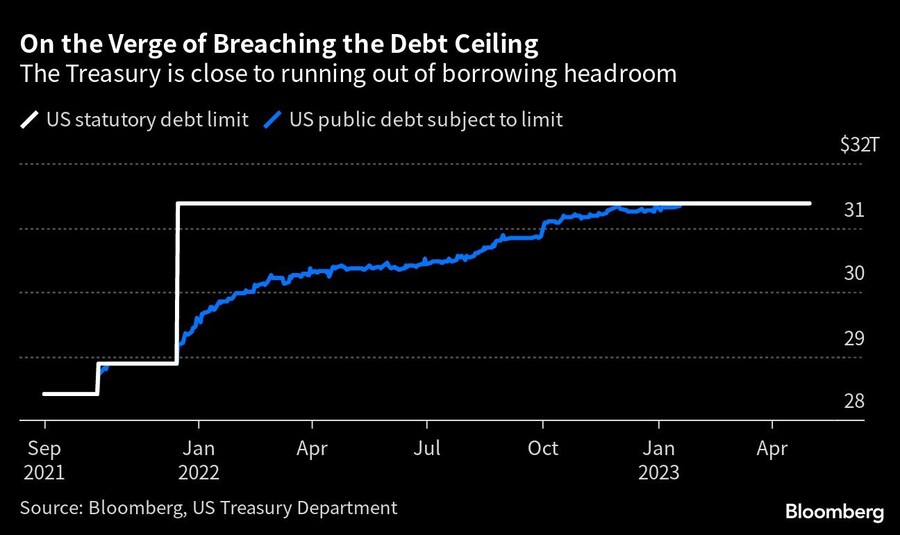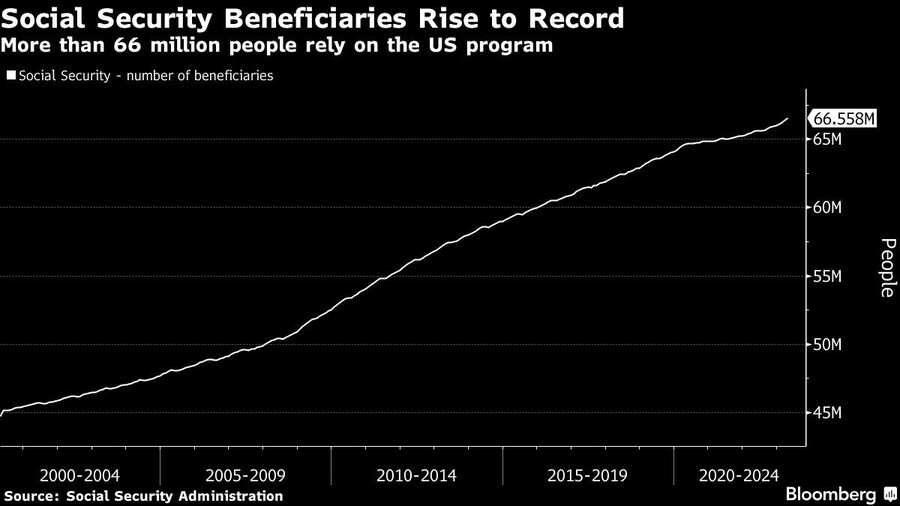

On Friday, June 2, millions of Americans are due a total of $25 billion worth of Social Security payments. More than anything else, that may prove a decisive element in forcing an end to the partisan standoff over raising the federal debt limit.
That obligation is “an enforcement mechanism we can’t ignore,” Democratic Sen. Chris Coons of Delaware, one of President Joe Biden’s top allies in Congress, said on MSNBC Wednesday. “When they find out that they’re not getting that check, our phones will light up like a Christmas tree.”

Treasury Secretary Janet Yellen has repeatedly warned that her department could run out of sufficient cash to make all federal payments as soon as June 1, putting the obligations coming due the next day at risk.
Yellen has also for months said it’s “unlikely” that Social Security benefits could be paid, but also said that there will be “difficult” choices to make if the debt limit isn’t raised and the Treasury runs out of funds. On Wednesday, she declined to specify “what exactly is possible and what is not possible.”
When it comes to Social Security — a vast retirement and disability program that had almost 66 million beneficiaries as of last year — what potentially makes an exception possible is that it has its own funding stream, separate from general government obligations. But even if it’s a theoretical option for the Treasury to keep making payments, experts say it’s legally questionable and in any event logistically challenging.

Which leaves the beneficiaries at risk. Those who are due to receive their money next week are retirees aged 88 and older, along with low-income individuals with disabilities.
“It’s a cruel twist of fate,” said Kathleen Romig, director of Social Security and disability policy at the Center on Budget and Policy Priorities in Washington. “The first people to have their benefits risked by this are the oldest and the poorest Social Security beneficiaries, who are paid in week one.”
House Speaker Kevin McCarthy hasn’t included Social Security in the sweeping cuts to spending that Republicans are demanding in return for supporting an increase in the debt ceiling. So any payments that aren’t made on time would be distributed once the borrowing limit was lifted.
The Treasury is slated to make $100 billion in Social Security payments in four installments next month — June 2, June 14, June 21 and June 28, according to a recent analysis by the Bipartisan Policy Center in Washington. So the longer an impasse continues once the debt limit is reached, the bigger the late payments bill might get.
Millions of others would also be affected, including those getting civil or military salaries and recipients of food stamps, health insurance and other benefits.
Social Security is somewhat separate from many other programs, however. The benefits draw on the contributions that workers have made. For decades, the system’s income was greater than the payouts, and a “trust fund” developed to park the excess. The Treasury issued special, non-tradeable securities for that surplus — which is included in the $31.4 trillion statutory ceiling.
When payments are due, the special Treasuries are liquidated — giving room to the Treasury under the debt limit to sell tradeable bills to the public, which generates cash the department can then distribute to beneficiaries.
“The headroom created by trust-fund dynamics would give the Treasury added borrowing authority to raise cash in the market,” said Lou Crandall, chief economist at Wrightson ICAP, a veteran analyst of Treasury debt. The nature of the accounting “means that Social Security payments are insulated from debt-ceiling constraints to a considerable degree,” he said.
If faced with the brutal situation of having insufficient cash, the Biden administration would be likely to at least try to prioritize Social Security, a former White House economic aide who now counsels market participants said.
Even if the Treasury were successful in doing that, however, it would likely run into legal problems, history suggests.
When a debt-limit breach was looming in 1996, Congress passed legislation granting the Treasury special borrowing authority on a temporary basis to ensure that Social Security payments were made on time. That left an impression that congressional action was needed for such a move.
During a debt-ceiling showdown in 1985, the Treasury redeemed some of the non-tradeable securities in the Social Security trust fund to stay under the limit. The General Accountability Office, a federal watchdog, examined that move and found it appeared to violate requirements of the Social Security Act.
“Those two actions taken collectively mean the courts are going to decide that Congress has to explicitly give Treasury the authority to prioritize payments, so they can’t do it,” said Douglas Holtz-Eakin, president of American Action Forum and a former director of the Congressional Budget Office.
What’s most likely if the Treasury did run out of sufficient cash is that Social Security checks would be postponed, said Jagadeesh Gokhale, a member of the Social Security Advisory Board, an independent agency that advises the president, Congress and the Social Security Administration on policy.
Given the political dangers for both political parties, he said, there’s immense pressure to ensure it never comes to that.
“It’s a risk for both sides — it’s hard to know in advance who would be blamed more,” said Gokhale, who is also director of special projects at the Penn Wharton Budget Model. “It’s difficult to know how the political cookie will crumble if there are delayed payments.”

Relationships are key to our business but advisors are often slow to engage in specific activities designed to foster them.

Whichever path you go down, act now while you're still in control.

Pro-bitcoin professionals, however, say the cryptocurrency has ushered in change.

“LPL has evolved significantly over the last decade and still wants to scale up,” says one industry executive.

Survey findings from the Nationwide Retirement Institute offers pearls of planning wisdom from 60- to 65-year-olds, as well as insights into concerns.
Streamline your outreach with Aidentified's AI-driven solutions
This season’s market volatility: Positioning for rate relief, income growth and the AI rebound
